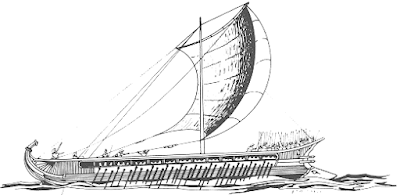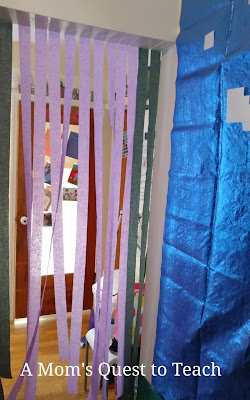There is something about history that has always intrigued me but I know many do not share my passion for the tomes of old. But we are fortunate that there are so many great ways to learn about the past including fantastic audio theater from
Heirloom Audio. Our family was blessed with the chance to review their newest edition of the The Extraordinary Adventures of G. A. Henty –
St. Bartholomew's Eve. My husband and our teenage son listened to the CD while traveling to Connecticut and thoroughly enjoyed it.
"Huddled together in a small chateau, mothers and children cling to each other. Weeping. Men stand guard. Waiting."
Background
To understand the tale of St. Bartholomew's Eve better, let me provide you with a little background history. The people that are central to the tale are the Huguenots – French Protestants who were in the middle of political and religious turmoil in France in the 1500s and 1600s.
During the reigns of King Francis I (1515-1547) and King Henry II (1547-1559), the power of the Huguenots as a group grew which led to government persecution. It was after the death of King Francis II, in 1560, that things moved violently against the Huguenots. King Charles IX and the French government were influenced by the queen mother – Catherine de Medicis – and she encouraged the Huguenots only to balance the power of the Guise family.
Eventually, a civil war broke out but with the Huguenots possessing some of the best military leaders in France, Catherine allied herself with the Duke of Guise. On Saint Bartholomew's Day, August 24, 1572, pro-Catholic forces murdered thousands of Huguenots. The massacre began in Paris (where Huguenots were gathered to celebrate the marriage of their leader – Henry of Navarre (later King Henry IV of France) to the king's sister – Margaret of Valois). Many well-known Huguenots were killed in Paris and the mobs and massacre spread throughout France. Henry of Navarre only saved his life by becoming Catholic (but he later converted back to Protestantism).

The two-disc set provides 2-1/2 hours of adventure for your family as you listen to the events of early Renaissance France. Actors who help bring the story alive include Brian Blessed, Elizabeth Counsell, Brian Deacon, David Shaw-Parker, Andy Harrison, and Hugh Docking. The story will take you from your living room or car to 16th-century France where you will fight alongside the Huguenots and French Catholics.
"I have not considered it necessary to devote any large portion of my story to details of the terrible massacres of the period, nor to the atrocious persecutions to which the Huguenots were subjected; but have, as usual, gone to the military events of the struggle for its chief interest."
Preface to St. Bartholomew's Eve by G. A. Henty
Possible Talking Points
While listening to
St. Bartholomew's Eve, I quickly thought of many different topics and talking points you could further research and discuss with your children. These include:
- Armor of God
- Fighting techniques of the time period
- Trained soldiers versus citizen soldiers
- Changes in weaponry
- Standing by your word
- Royal marriages and their influence on the citizens of the kingdoms
- Compromise and diplomacy
- Discrimination (the doors of the Huguenots were marked)
- Hiding in plain sight
 |
| 2 CD set with liner notes |
What We Like
The narration of the events and actions by Brian Blessed as he portrays G. A. Henty is fantastic. For example, during one of the battle scenes, he narrates the action and we hear the clash of swords and men fighting in the background. This really brings the whole story to life. My husband also agreed that Blessed's narration was one of his favorite parts.
From the beginning of the tale when Henty finds the two boys who are going to skip church to the end when the boys change their minds, the entire process of narration is well done. I really like the ending of the tale...the final track with Henty speaking about being able to worship freely based upon the actions of those in the story...this was a great conclusion! It brought everything together for me and also presented another great teaching moment.
Our teenage son thought it was told well considering it was "told virtually, not visually" and that overall the production was good. (Although he thought some of the sound effects were "a bit cheesy" but I contribute that to his being a teen.) His favorite part was "when the little kid with the peg leg wanted to fight."
When talking with my husband, he said the most jarring memory of the tale was when the actual slaughter began. The most stirring to him was when the Huguenots stood up to the Catholics. The climax of the audio drama was the most memorable to him.
Notes about the Audio Theater
As this production does portray battles, fighting, and some of the more violent aspects of religious intolerance, I recommend previewing
St. Bartholomew's Eve before listening to it with your entire family. It is recommended for listeners of age 6 and up, but I don't know if I would let our children listen to it at that young an age. In fact, I would say that the audio drama is not for the faint of heart. For example, in one instance it describes the execution (not really in gruesome detail) of a young man who was thought to be a Huguenot and not a Catholic. They also discuss the deaths of families (being dragged into the street and meeting death). So while nothing is graphically detailed, it could be upsetting for younger children.
We enjoyed St. Bartholomew's Eve and are glad to add it to our collection of productions from Heirloom Audio. It is a great addition on our CD shelves next to Wulf the Saxon which we
reviewed in February 2018.
To learn more about Heirloom Audio, please visit:
And don't forget you can read the reviews of other members of the
Homeschool Review Crew!


















































